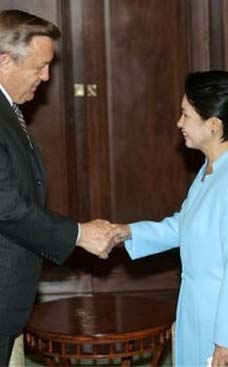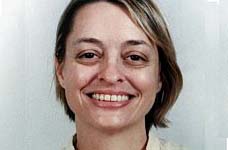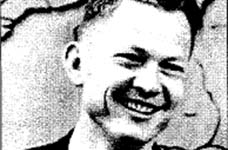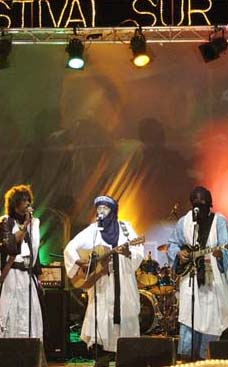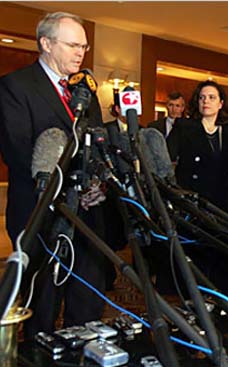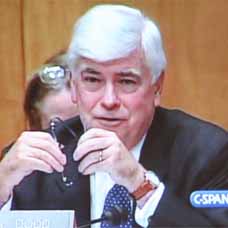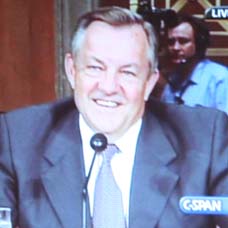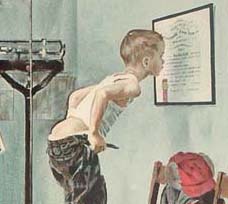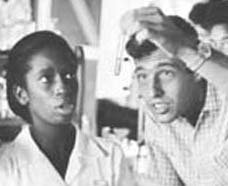
The fruit of decades of research and long-standing friendships, it's a dazzling show filled with beautifully crafted and adorned functional objects -- camel saddles of the sort Seligman rode in, tents, bags, swords, amulets, cushions, dresses, earrings, spoons and drums -- made of leather, wood and silver, bits of ebony, agate beads, brass and gold. Drawn from museums in the United States and Europe -- including UCLA's Fowler Museum, which created the exhibition with Stanford -- they express the qualities prized by mobile people who value aesthetic beauty in all things great and small: refinement, clarity of line, flawless workmanship. Like people throughout the ages, Westerners, Arabs and Africans, Seligman was intrigued by the mystique of the Tuareg, who ruled the caravan trade routes through the vast Sahara for more than 1,000 years. They were often called the "blue people of the Sahara'' because of their trademark indigo-dyed cotton veil/turbans (tagulmust), worn by the men, which stain the skin blue. Masters of the harsh desert world, they were fierce fighters who valued their independence and freedom of movement.
RPCV Tom Seligman is director of Stanford's Cantor Arts Center, where his exhibition "Art of Being Tuareg: Sahara Nomads in a Modern World'' opens June 1
The soul of the Sahara, brought alive in regal display
Jesse Hamlin, Chronicle Staff Writer
Saturday, May 26, 2007
Caption: Tom Seligman, Director of Stanford's Cantor Arts Center, poses in front of a Tuareg tent. Chronicle photo by Deanne Fitzmaurice
Tom Seligman set out on a 10-day camel trek through the Sahara on Christmas Day 1979 to photograph ancient rock paintings. The African-art scholar was fascinated by the Tuareg -- the proud North African nomads famous for their desert survival and fighting skills and for the elegance of their attire, carriage and art -- and he traveled the harsh terrain in a four-man caravan led by a Tuareg camel breeder named Azuri.
"By the end of the first 10-hour day, I was so exhausted I just laid down on the ground and slept. After a while I got conditioned, and I got into it,'' says Seligman, the director of Stanford's Cantor Arts Center, where the exhibition "Art of Being Tuareg: Sahara Nomads in a Modern World,'' opens Wednesday.
The fruit of decades of research and long-standing friendships, it's a dazzling show filled with beautifully crafted and adorned functional objects -- camel saddles of the sort Seligman rode in, tents, bags, swords, amulets, cushions, dresses, earrings, spoons and drums -- made of leather, wood and silver, bits of ebony, agate beads, brass and gold. Drawn from museums in the United States and Europe -- including UCLA's Fowler Museum, which created the exhibition with Stanford -- they express the qualities prized by mobile people who value aesthetic beauty in all things great and small: refinement, clarity of line, flawless workmanship.

Caption: Tuareg art and objects on display at the Cantor Arts Center include leather bags and saddle bags. Chronicle photo by Deanne Fitzmaurice
"This fringe is completely unnecessary, it's purely decorative,'' says Seligman, a tall man with a bushy white beard, pointing to an exquisitely detailed and crafted red and green leather bag made by a Tuareg woman in Niger, one of the modern African nations and former French colonies (the others include Mali, Algeria and Burkina Faso) where the Tuareg live and struggle to maintain their culture. "It's about embellishment, but it's also about movement. When the animal is moving, it's moving, creating vibrancy in the world. When the wind is blowing, your robes are blowing. The Tuareg prize the overall elegance of the piece, the motion of the piece, and the utility of the piece.
"There's a silver ring over there with a rattle inside of it. The notion of animating the world is very important to them, and the beautification of the world. The art of being a Tuareg is the art of being purposeful -- about your presentation to your family, your community, to the world -- and purposeful in the sense of being proper, respectful, composed and decorous.''
In addition to the 200 or so pieces, the show also will feature Tuareg artists and smiths, members of the social class called inadan, working in the galleries, videos of other Tuareg artists at work and at home, banners bearing photographs of a wide range of people and their words about what it means to be Tuareg.

Caption: Tuareg art and objects on display at the Cantor Arts Center include a photo of a Tuareg woman in Niger. Photo from "Art of Being Tuareg" by Tom Seligman
A trio of Tuareg musicians from Niger called Tidawt, who merge the Arabic and African strains of traditional Tuareg music with electric guitars and American rock, will perform at the exhibition opening party Thursday. They also will play a benefit at Slim's in San Francisco June 4, jamming with drummer Mickey Hart on a bill that includes bluesman Markus James and a group of West African musicians.
"We're trying to make it more alive,'' says Seligman, 63. He first spent time with the Tuareg in 1971, when he traveled through the Sahara after serving in the Peace Corps in Liberia. Later, as a curator at the de Young Museum, he did a lot of field research in Liberia until the political situation there made it untenable.
Seligman visited places like Timbuktu in Mali -- which was founded by the Tuareg, whom he describes as a "seminomadic pastoralist people of North African Berber origin" -- and Agadez, Niger, where he was befriended by a couple of well-known inadan: silversmith Saidi Oumba and his wife, Andi Ouhoulou, a leather artist.
Two of their nine children, sons Ousmane Saidi and Salah Saidi -- the Tuareg take the father's first name as their last -- will be at Stanford, demonstrating the age-old crafts they've adapted to meet the contemporary demands of the global marketplace (you can buy Tuareg jewelry online and Hermès has commissioned Tuareg silver work . They will work near a life-size tableau of their father's corrugated tin shop, where two mannequins representing their parents, formally garbed in the shimmery indigo turbans and veils that signify the Tuareg, stand over a table displaying their fine jewelry and leather work.
"They're like family at some level,'' says Seligman, whose photographs of his friends and other Tuareg people, their camels and creations, appear in the big catalog that accompanies the show, which travels to the Smithsonian's National Museum of African Art in the fall. "I try to be quite overt about that in my essays. I don't pretend that I'm some anthropologist who looks at this people from a distance. I don't. I look at them from a biased view -- I like 'em! I like to hang out with them. I know their kids, I know their grandchildren. I eat with them and travel with them.''
Like people throughout the ages, Westerners, Arabs and Africans, Seligman was intrigued by the mystique of the Tuareg, who ruled the caravan trade routes through the vast Sahara for more than 1,000 years. They were often called the "blue people of the Sahara'' because of their trademark indigo-dyed cotton veil/turbans (tagulmust), worn by the men, which stain the skin blue. Masters of the harsh desert world, they were fierce fighters who valued their independence and freedom of movement.

Caption: A Tuareg man on a white camel in Niger wears a traditional turban or tagulmust. Photo from "Art of Being Tuareg" by Tom Seligman
"They had control of the desert,'' Seligman says. "They knew where the water sources were. They ran caravans, they made profit from protecting caravans, they raided caravans that didn't pay up. The mystique comes mostly from the kind of Rosseauian notion of the noble warrior. You see 10,000 of these guys in a camel caravan going off across the desert wearing turban and veil.'' Or, as one of the gallery wall texts says, "The regal image of the aristocratic Tuareg, mounted on his large white camel and carrying his ever-present sword, proved irresistible to Europeans.''
In addition to making all the necessary objects, the inadan function as conduits to the spirit world and arrangers of marriages and deals between chiefs of extended Tuareg families and federations. Some scholars believe they are partly descended from Jews driven from southern Morocco in the 14th and 15th centuries. They mingled with the Tuareg they encountered on the trade routes.
"A lot of the inadan will say that they are descended from King Dauda, King David,'' Seligman says. "When the Moors and the Jews were pushed out of Spain in 1492, a lot of them were forced down to Morocco and what is the Spanish Sahara. The Jews were involved with metalworking and leather working all over the Mediterranean. Undoubtedly, they followed the caravan routes to the east.''
Many Tuareg adopted Islam but retained traditional beliefs and practices. Mohamed ag Ewangaye, an inadan intellectual who lives in Niamey, the capital of Niger, writes in the exhibition catalog about the merging of Muslim and Tuareg traditions: "We have an intimate relationship with the cosmos and with movement that is manifested in our art. This aspect was not crushed by Islam, for in no way does it contradict or compete with the principles of the oneness of God that underlie the religion.''
And unlike many other African cultures, in which artists make objects as "physical representations of local beliefs,'' Ewangaye writes, "our objects function as commodities of daily life. Tuareg artisans are guided purely by the desire for aesthetic beauty, utility and functionality.''
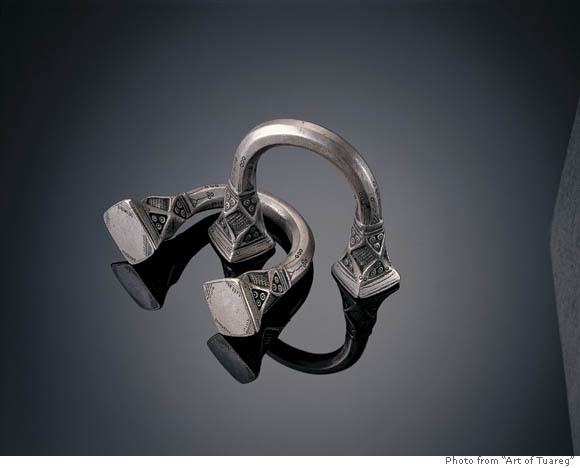
Caption: Tuareg art and objects on display at the Cantor Arts Center include silver bracelets made in Niger in 1975. Photo from "Art of Being Tuareg" by Tom Seligman
But the amulets they make serve a spiritual function. Inside these intricately engraved silver or clean leather amulets are Koranic verses written on paper by a marabout, or Muslim religious teacher. The paper is folded into what's called a magic square, passed through incense by the marabout and then taken to an artisan to be encased in a custom-made amulet. Seligman wears three leather ones around his neck.
"I believe they protect me,'' says the museum director, who has also gone to marabouts before making a journey to ask for safe passage or good health. The man writes a Koranic passage on a wooden board, then washes the ink away with water and has the person receiving the blessing drink the ink. It's tasteless, like water, says Seligman, a native San Franciscan who practices no religion but takes spiritual nourishment "where I can get it. I freelance,'' he adds with a laugh.
The Tuareg continue to go their own way, despite the forces that have altered their world over the past two centuries -- colonization, nationalism and devastating droughts -- and have forced the majority to give up their nomadic ways. The Tuareg resisted French colonial domination for about 20 years in the early 1900s, and there have been armed rebellions against the governments of Mali, Algeria and Niger in recent decades. (These days the Tuareg are more likely to traverse the desert in 4-by-4 trucks rather than on camels.)
After the former French West African colonies became independent countries in the 1950s and '60s, "all of a sudden you have borders, and these nomadic people are being told they have to have passports, and have to pay some fee to cross a line in the sand that nobody can see,'' Seligman says. "The Tuareg want to continue to be who they are and control their destiny.'' He mentions a Tuareg acquaintance who said without the slightest arrogance that he was as confident with a surface-to-air missile as he was with hammer and anvil.
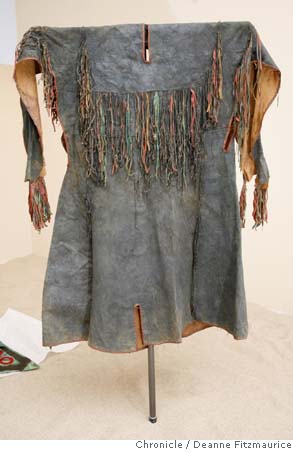
Caption: Tuareg art and objects on display at the Cantor Arts Center include a leather dress with fringe, the type worn by Tuareg women in the 19th and early 20th centuries. Photo from "Art of Being Tuareg" by Tom Seligman
"They talk about individual freedom. It's as significant to them as any ideology is to an American. It's not just being free to do anything. Freedom comes with a whole set of responsibilities that go along with it, to family, to community.''
A number of Tuareg people worked with Seligman and his associates on this exhibition, the largest of its kind to be shown in the United States and the first to tour nationally. "They really like that it's being done,'' Seligman says. "It shows respect for their art, for them and their culture."
-- To hear a sample of contemporary Tuareg music, go to sfgate.com/eguide.
-- A concert to benefit the Tuareg, through the Nomad Foundation, featuring the Tuareg trio Tidawt from Niger, drummer Mickey Hart, blues musician Markus James and the West African group Wassonrai and others, will be held at 8 p.m. June 4 at Slimís, 333 11th St., San Francisco. Tickets $25. For tickets, call (800) 225-2277 or go to www.tickets.com or www.virtuoso.com. For information, call Slimís at (415) 255-0333 or visit www.slims-sf.com.
Art of Being Tuareg: Sahara Nomads in a Modern World: 11 a.m.-5 p.m. Wednesday-Sunday and until 8 p.m. Thursday from May 30 to Sept. 2 at the Cantor Arts Center on the Stanford University Campus. Admission is free. For information, call (650) 723-4177 or visit www.museum.stanford.edu.
E-mail Jesse Hamlin at jhamlin@sfchronicle.com.






